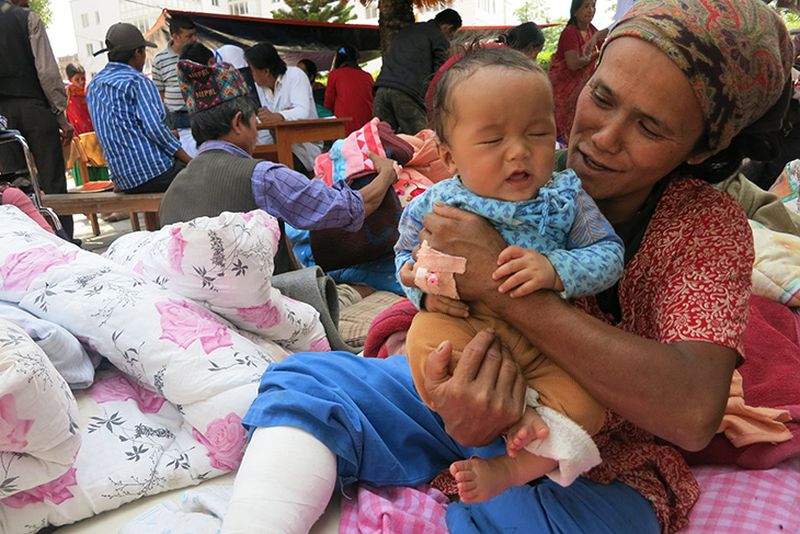The second powerful tremor on 12 May — just eighteen days after the 7.8 magnitude earthquake — brought even more devastation to Nepal. Families in certain districts, like Sindhulpalchok, were hit by both disasters. The count of the dead stands now at over 8,300, there are around 20,000 injured, whole villages have been cut off by fresh landslides, while many additional buildings have entirely collapsed.
“In spite of the new challenges brought by the latest major earthquake, particularly in terms of logistics, the ICRC has stepped up its action. We do this both directly and by supporting the action of the Nepal Red Cross Society (NRCS) and of the International Federation of Red Cross/Red Crescent Societies (IFRC)”, said Dragana Kojic, head of the ICRC delegation in Nepal.
The ICRC is concentrating on the restoration of family links, physical rehabilitation, management of the mortal remains of victims and emergency first aid. The ICRC has also helped the NRCS kick start basic psychological support in five districts.
Next week, ICRC will share with relevant embassies an update on foreign nationals registered as missing and whose cases have been solved through the ICRC’s familylinks website, as well as “I am alive” messages. ICRC delegates alongside NRCS volunteers visited hospitals, children homes and camps for displaced persons in order to identify people in need of communicating, or being reunited, with their relatives. Teams have been sent to affected districts in order to support NRCS specialists in restoring family links.
“Many earthquake survivors have sustained the type of injuries which may require long-term physical rehabilitation”, said Jagadish Shrestha, head of Health at ICRC Nepal. These include spinal cord injuries, amputations and certain cases of complicated fractures. “We shall be working with our long-term partners, the Green Pastures Hospital in Pokhara and the Yerahiti Rehabilitation Centre in Kathmandu, which is linked to the Army Hospital. The latter has been treating mainly civilian patients”, added Shrestha. An ICRC team has toured various hospitals to assess current and future needs, and the first patients have already moved from emergency care to physical rehabilitation.

Group discussion with female community health workers about the situation of Kalika VDC in Sindhuplachowk, and the need for basic psychological support for the earthquake affected families. ©ICRC
Another objective is to provide guidance to security forces and affected district authorities so they can identify and properly manage human remains with dignity and in full respect of cultural practices. Messages on not cremating the dead before they have been properly identified are being disseminated. Equally important is explaining that dead bodies are not a source of epidemics.
Between 25 April and 16 May 2015, in cooperation with the NRCS, the ICRC:
- enabled 565 persons inform they were alive through the familylinks website; visited 19 hospitals, 11 camps for displaced people, two children homes as well as 10 jails, in order to offer contact with the families, collect lists of missing persons and assist those who could not return home by themselves; sent teams to some of the most heavily affected districts, namely Sindhupalchok, Gorkha, Rasuwa, Dhading and Nuwakot to assess needs in terms of restoring family links; provided tarpaulins and hygiene kits to ten jails, and notified embassies of foreign detainees of their fate;
- helped the NRCS kick start basic psychological support to earthquake survivors in five districts, namely Sindhupalchok, Dhading, Gorkha, Nuwakot and Rasuwa; opened child friendly spaces in Nuwakot, Dhading and Gorkha;
- supplied hospitals in the Kathmandu Valley and outlying districts with nine sets of dressing modules, eight sets of plaster castings as well as with tarpaulins; provided support to NRCS for its first aid services;
- worked with its partners at Green Pastures Hospital, Pokhara, and Yerahiti Rehabilitation Centre, Kathmandu, to plan for the long-term physical rehabilitation of earthquake victims;
- handed over 2,000 body bags to the NRCS and to hospitals; fulfilled all needs related to personal protective equipment for the Department of Forensic Medicine and will provide them with additional refrigeration capacity to properly manage the dead.


